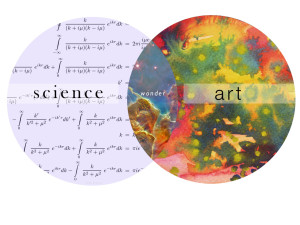 The question of whether recruiting is more of a learned, measurable science, or a subtle, somewhat innate art continues to inspire healthy dialogue to this day. As recruiting methods evolve and pairs technology with good-old fashioned human outreach, what we're likely to see is a combination of these two schools of thought.
The question of whether recruiting is more of a learned, measurable science, or a subtle, somewhat innate art continues to inspire healthy dialogue to this day. As recruiting methods evolve and pairs technology with good-old fashioned human outreach, what we're likely to see is a combination of these two schools of thought.
Adaptive recruiting is going to require the retainment of art-infused practices, while also openly embracing a crafty application of scientific methods.
How can this be done?
Around the year 2000 most people in the recruiting industry were asking themselves, and one another, if recruiting online was a viable method. Within a couple years that question had been answered, and the next question revolved around how can technology revolutionize the practice of talent acquisition.
This question—and many others related to big data trends where algorithms gracefully sort through a mountain of candidate profiles—needs to be constantly re-examined as applied science ventures further into the domain of recruiting.
Perhaps the first step to finding a suitable answer is to admit that both art and science are things that can be experienced and learned. It wouldn’t surprise me if plenty of recruiters and hiring managers disagree with the following statement: Recruiting may require some inherent talents, but its process and methods can be learned.
The newer science of recruiting isn’t meant to replace human judgment in the workplace, or the interview process. New tech sourcing tools can act as supplements to a hiring manager or recruiter’s experiential knowledge and well-established methodologies.
I think a fair point to make is that “art” (in this context) still has an empirical base (it’s unlikely that many of the “gut feel” methods behind hiring strategies are based purely in the subjective). In other words your gut is being practical—not mysterious. The true art behind this comes in the form of making judgments and insights when you don’t have the whole picture. You have to know what these empirical and practical signals mean.
The easiest way to summarize how recruiting is both an art and a science is to break down the talent acquisition process.
Sourcing
Technology is changing the landscape of sourcing every day, rapidly becoming the most scientific step in the process. Digital footprints are responsible for the largest changes in the recruiting landscape—leading to “social sourcing.” Please read this post from our CEO Jon Bischke that outlines this new, resourceful, phenomenon. Moreover, with all the extensive (quality) data out there, sourcing tasks are becoming increasingly automated as recruiters can gain valuable insights into prospective candidates that go far beyond resumes.
Attraction
Once you’ve sourced your talented prospects, your ability to get them to join your team is reliant upon how alluring your business is (for established workers to recent millennial college grads). Company culture, memorable promotional campaigns, and design/cultural aesthetics all propel your efforts to entice people to join you. HR branding is difficult, but if it’s done correctly (Facebook and Google being two clear-cut examples of success) these creative efforts will streamline the process. Without a doubt these efforts require more art than science (even if you’re assisted by psychology or other social science insights). But what’s to be said about creativity within science?
Selection
This is the middle ground, where both the science and art can be utilized to make key decisions. As a hiring manager you have a lot of options to choose from. You can rely on your years of experience and knowledge. You can test and revise that knowledge with aptitude tests or ranking algorithms to help you decide between candidates. And you can find inventive ways to use both science and art to address unknowns. Recruiting will always require a skilled and insightful recruiter to make difficult decisions, particularly when they need to bridge gaps or take a stab at the unknowns. Creativity within science on this front helps you see some sleeper causal relationships that experience may not readily provide. One simple way of keeping science in recruiting is being open to new data that revises some of your previously longstanding assumptions.
By bringing both a science and an art to the recruiting process, recruiters can make their searches more proactive, get tangible information concerning a candidate’s skills and accomplishments, make more informed evaluations, and continually revise their practices.

